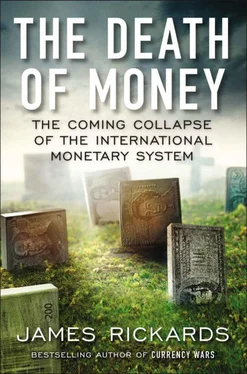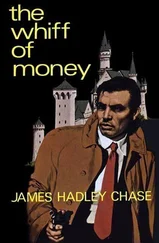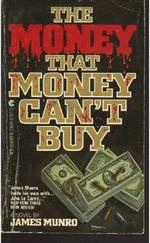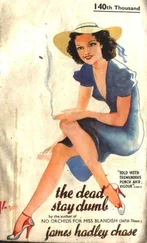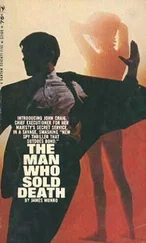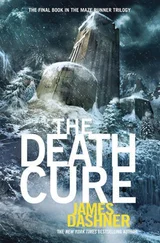Footnote 130 admits that activity in AMR and UAL before 9/11 was “highly suspicious.” It also says, “Some unusual trading did in fact occur, but each such trade proved to have an innocuous explanation.” A closer look at these “innocuous” explanations reveals the flaws in the commission’s reasoning.
For example, the report finds “a single U.S.-based institutional investor with no conceivable ties to al Qaeda purchased 95 percent of the UAL puts on September 6 as part of a trading strategy that also included buying 115,000 shares of American.” This explanation falls down in two ways. First, the fact that a high percentage of the trades were found to be innocent is completely consistent with signal amplification. Only the small initial trade is done by terrorists. The 9/11 Commission Report presented no evidence that it had made any effort to drill down to the small initial signal. Instead, the staff were beguiled by the innocent noise.
Second, the 9/11 Commission relies on the fact that the investor it interviewed said he bought UAL puts as part of a strategy involving the purchase of AMR shares, a kind of long-short trade. This shows naïveté on the part of the commission staff. Large institutional investors have numerous positions that have nothing to do with one another but that can be selected post facto to show innocent motives to investigators. On its face, this investor’s AMR position says nothing about why it so heavily shorted UAL.
The report goes on to say that “much of the seemingly suspicious trading in American on September 10 was traced to a specific U.S.-based options trading newsletter, faxed to its subscribers on Sunday, September 9, which recommended these trades.” This analysis shows that the commission staff had a limited understanding of how Wall Street research works.
There are thousands of trading tip sheets in circulation. On any given day, it is possible to find at least one recommending the purchase or sale of most major companies listed on the New York Stock Exchange. Going back after the fact to find a newsletter that recommended buying puts on American Airlines is a trivial exercise. No doubt there were other newsletters in circulation recommending the opposite. Selecting evidence that fits a theory while ignoring other evidence is an example of confirmation bias, a leading cause of erroneous intelligence analysis.
Another problem with the newsletter rationale is the belief that the recommendation arose independently of the insider trading already going on in AMR. Why treat the newsletter as a signal when it was actually part of the noise? For example, on September 7, trading volume in AMR doubled from the previous day and reached a near three-month high with a declining stock price. This pattern is consistent with insider trading ahead of an attack on September 11. It is more likely that the September 7 put volume caused the September 9 newsletter recommendation than it is that the newsletter caused the September 10 put buying.
The more likely explanation is that the entire sequence from September 6 through 10 was a signal amplification caused by a small initial insider trade. To isolate a single event like the newsletter and give it explanatory power without reference to prior events is poor forensic technique. It is better to take a step back and look at the big picture, to separate signal and noise.
Insider traders and those piggybacking are notorious for retaining research reports to support their activities in case the SEC comes calling. SEC after-the-fact inquiries are routine whenever the SEC identifies suspicious trading related to a market-moving event. Waving a research report at SEC investigators is a standard technique to make them go away. Stock trading criminals have gone so far as to prepare their own research reports for the sole purpose of having a cover story in case their insider trading is ever questioned. Given this well-known technique for foiling investigations, it is unfortunate that the 9/11 Commission Report gave weight to a single newsletter.
Viewed through the lens of signal amplification, the 9/11 Commission’s “large buyer theory” and the “newsletter theory” contained in footnote 130 are more consistent with terrorist trading than a refutation. Moreover, these theories never address the put buying in United Airlines on September 7 and the other suspicious trades.
It is important to disassociate this insider trading analysis from the so-called 9/11 Truth Movement, a collective name for groups and individuals who assert conspiracy theories related to the 9/11 attacks. Many of these theorists claim that agencies and officials of the U.S. government were involved in planning the attacks and that the twin towers collapsed from prepositioned explosives and not from the impact of the hijacked planes. This nonsense is a disservice to the memory of those killed or injured in the attack and in subsequent military responses. The hard evidence that the attacks were planned and executed by Al Qaeda is irrefutable. The 9/11 Commission Report is a monumental and excellent summary, a brilliant work of history despite the inevitable flaws that arise in such a wide-ranging effort. Furthermore, there is nothing inconsistent between the widely accepted narrative of 9/11 and terrorist insider trading. Given the magnitude of the attack and the imperatives of human nature, such trading should have been expected. The statistical, behavioral, and anecdotal evidence for insider trading are overwhelming.
Terrorist insider trading was not a U.S. government plot but a simple extension of the main terrorist plot. It was despicable yet, in the end, banal. Small-time terrorist associates could not resist betting on a sure thing, and signal amplification took care of the rest. Still, the signal was not hidden. On trading screens all over the world, evidence of the coming attacks was visible by watching options trading in American and United Airlines.
In the chilling words of CIA director George Tenet, “The system was blinking red.”
If the 9/11 Commission was finished with the topic of terrorist insider trading, one government agency was still willing—though initially ill equipped—to dig deeper.
The Central Intelligence Agency had been mobilized before 9/11, based on the volume of reporting that indicated a spectacular attack might be in the works. A body of intelligence concerning reports of unusual trading in airline and other stocks in the days before the attack came to the CIA’s attention immediately after 9/11. But it had a problem pursuing those leads because it had almost no expertise in capital markets and options trading.
This gap in intelligence capabilities at the time is not surprising. Prior to globalization, capital markets were not part of the national security arena. Markets were mostly local, controlled by national champions in each country. Some banks, such as Citibank, were international, but they conducted traditional lending businesses and were not involved in stock trading. The CIA did not have capital markets expertise because it had not been required during the Cold War; markets were not part of the battlespace.
As a result, when reports of possible terrorist insider trading rolled in after 9/11, practically no one at the agency had the experience necessary to evaluate how it might have occurred and its implications for national security. Fortunately, one senior intelligence analyst understood the implications quite well.
Randy Tauss lives quietly in the upscale Washington, D.C., suburb of McLean, Virginia, not far from CIA headquarters. He retired from the CIA in 2008 after a thirty-seven-year career, mostly in the agency’s Directorate of Intelligence, the analytic branch. He is a brilliant physicist and mathematician who won numerous medals from the agency for his technical and deductive work. Although most of his work involved complex weapons systems, he won fame both inside and outside the agency for his role in solving the mystery of the 1996 midair explosion of TWA Flight 800.
Читать дальше
